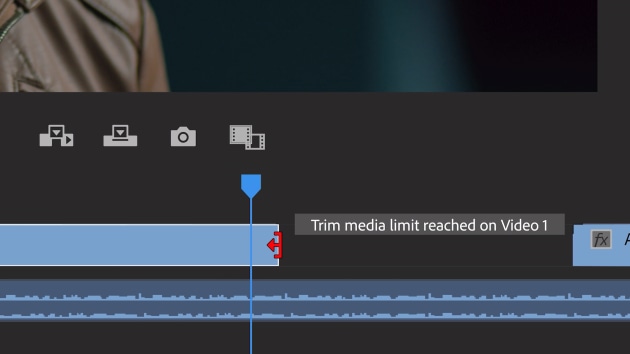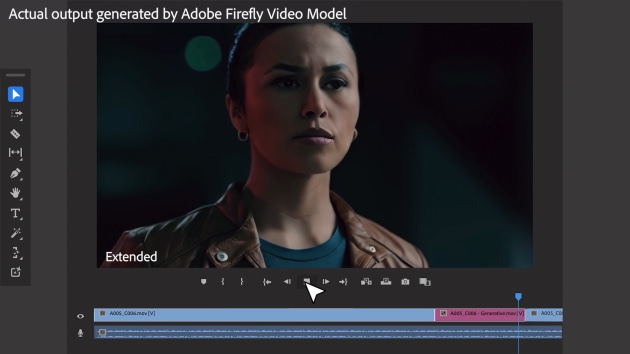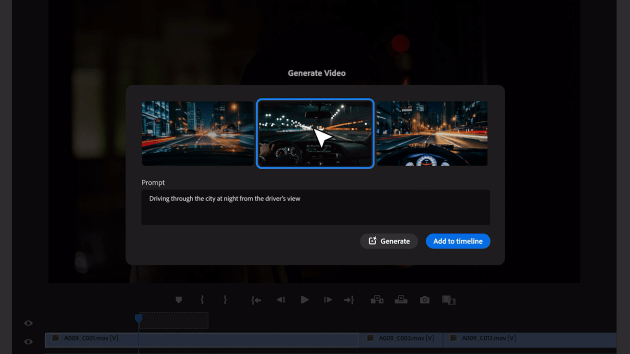Adobe Premiere Pro to get generative AI video features this year
Adobe has previewed a series of generative AI video tools designed for Premiere Pro that enable users to add or remove objects in a scene and will work alongside Adobe’s other Firefly generative AI models.
The new generative AI tools coming to Premiere Pro this year will enable users to streamline editing videos, including adding or removing objects in a scene or extending an existing clip.
These new editing workflows will be powered by a new video model that will join the family of Firefly models, including Image, Vector, Design and Text Effects.
Adobe has said it also plans to bring third-party generative AI models directly into Adobe applications like Premiere Pro.
It says professional video editors could, in the future, leverage video generation models from OpenAI and Runway, integrated in Premiere Pro, to generate B-roll to edit into their project. It also shows how Pika Labs could be used with the Generative Extend tool to add a few seconds to the end of a shot.
“By bringing generative AI innovations deep into core Premiere Pro workflows,we are solving real pain points that video editors experience every day, while giving them more space to focus on their craft,” says Ashley Still, Senior Vice President, Creative Product Group at Adobe.
Of the new features set to be released this year, Generative Extend is probably the most interesting new announcement, as it will 'seamlessly' add frames to make clips longer, so it’s easier to perfectly time edits and add smooth transitions.


Adobe says this 'breakthrough' technology solves a common problem professional editors run into every day, allowing them to create extra media for fine-tuning edits, to hold on a shot for an extra beat or to better cover a transition.

Also, Object Addition & Removal will allow users to select and track objects, then replace them. Adobe says users can remove unwanted items, change an actor’s wardrobe or quickly add set dressings such as a painting or photorealistic flowers on a desk.

Text to Video allows users to generate entirely new footage directly within Premiere Pro. "Simply type text into a prompt or upload reference images. These clips can be used to ideate and create storyboards, or to create B-roll for augmenting live action footage," the company says.
While much of the early conversation about generative AI has focused on a competition among companies to produce the “best” AI model, Adobe says is sees AI-generated content is most useful when it’s a natural part of what a user does every day.

For this reason, the company says it is focussed on providing industry-standard tools and workflows that let users use any materials from any sources across any platform.
Whether that means Adobe Firefly or other specialised AI models, Adobe says it is working to make the 'integration process' as seamless as possible from within Adobe applications.
In addition to Adobe’s new generative AI video tools, new audio workflows in Premiere Pro will be available to customers in May. The latest features include:
- Interactive fade handles, where editors can create custom audio transitions faster by simply dragging clip handles to create audio fades.
- A new Essential Sound badge with audio category tagging. AI will automatically tag audio clips as dialogue, music, sound effects or ambience, and also adds a new icon so editors get one-click, instant access to the right controls for the job.
- Effect badges: New visual indicators make it easier to see which clips have effects, quickly add new ones, and automatically open effect parameters right from the sequence.
- Redesigned waveforms in the timeline: Waveforms intelligently resize as the track height changes on clips, while new colors make sequences easier to read.

